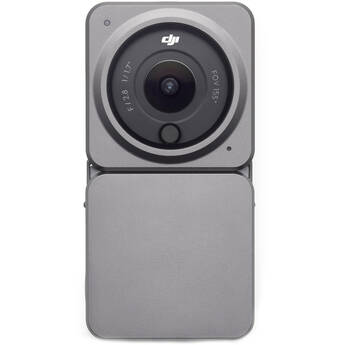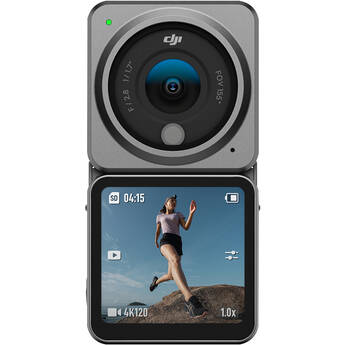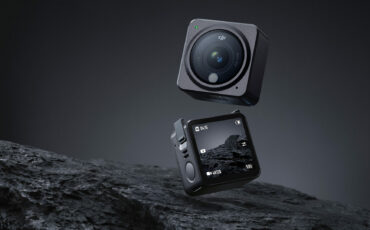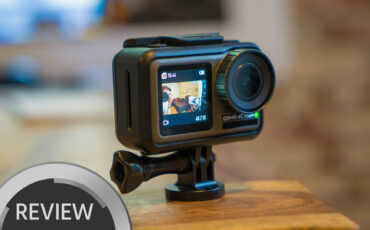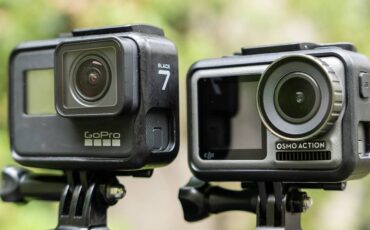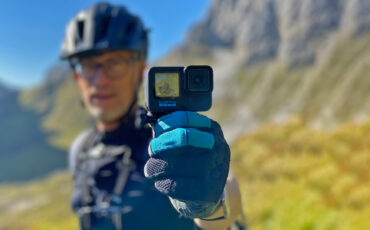DJI Action 2 Review – so Tiny, yet so Capable
Music Courtesy of Epidemic Sound
DJI has finally released a successor to the two-and-a-half-year-old Osmo Action. After playing with it for about a week, I have to admit, the new Action 2 is a worthy successor. If you want to know everything about the camera’s features and specs, head over to my other article. For my personal experience with the camera, continue reading here.
Action camera downsized
As you can see from its dimensions, DJI decided to follow a bit of a different path than GoPro. The last two action cameras from GoPro, the HERO 9 and HERO 10, have actually gotten bigger than the previous generations. This happened mainly because of the larger battery, which in the end is a good thing, but in some situations, the GoPro can be too large. The new DJI Action 2, on the other hand, has gotten significantly smaller than the original Osmo Action. The camera itself has a box-shaped body with the lens on one side and a touchscreen on the other. It only weighs 56 grams and its dimensions are only 4 x 4 x 2.2cm. It actually reminds me of the GoPro HERO Session camera which unfortunately was discontinued some years ago.
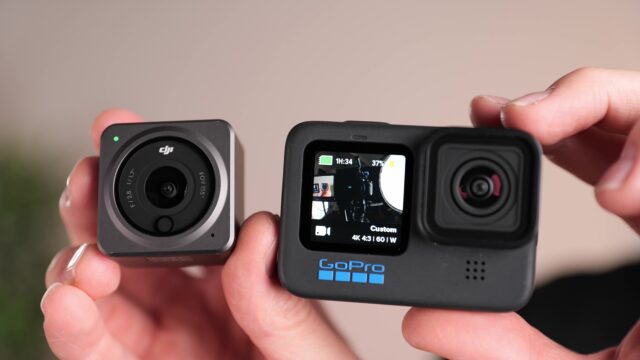
Another camera that has a slightly similar form factor, is the Insta360 GO 2. The Action 2, however, offers a touchscreen along with better build quality, and higher resolutions and framerates. Just like the Insta360 GO 2, it has magnets in the body and comes with various accessories such as a magnetic lanyard. You can wear it under a t-shirt to get chest-mounted first-person footage.
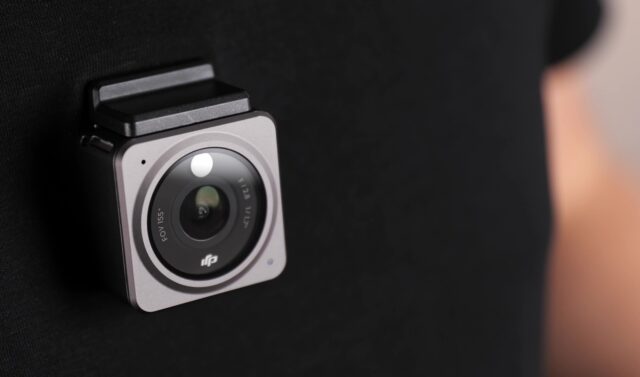
Now, while the Insta360 GO attaches to the magnetic pad by itself, the DJI Action 2 needs an additional little plastic piece to go over the T-shirt and hold the camera, because the magnets are placed on the bottom of the camera body. Thanks to that, Action 2 has a much stronger connection to the magnetic pad.
Filmmaking for Photographers
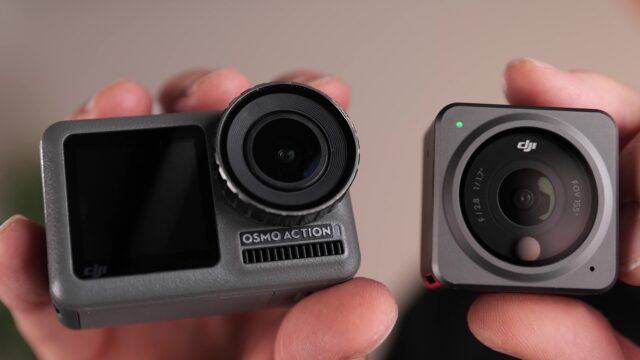
Large sensor, rugged body and ultra-wide lens
The build quality of the camera’s aluminum body feels really solid and premium. There is one button on the camera that acts both as a power button and as a record start-stop button. The battery is built-in. The camera module by itself is waterproof up to 10 meters, but the additional modules are not. If you want to use the camera underwater with any of the modules, you need to put it in a plastic underwater housing that DJI is also selling. Unfortunately, there is no lens cap or removable front glass element on the camera, so I am a bit concerned about possible scratches if you put it in a bag with other sharp objects such as keys.
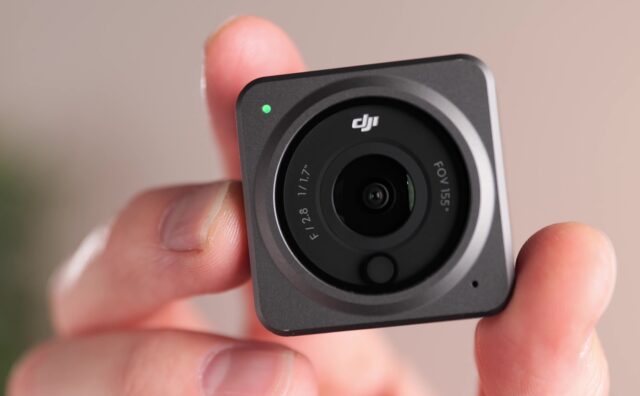
Speaking about the lens, DJI incorporated a 155-degrees field of view lens with an f/2.8 aperture. That is a wider field of view than the original Osmo Action which had 145-degrees. The image sensor used in the new DJI Action 2 is also larger than most other action cameras. DJI used a 1/1.7” sensor which is the same size sensor that DJI used in Pocket 2. It is most likely the same sensor. For reference, the new GoPro HERO 10 has a smaller 1/2.3” sensor which is the same size as the first DJI Osmo Action. When it comes to action cameras, as far as I know, only the Insta360 ONE R has a larger sensor with the 1-inch camera module.
Modular design and storage
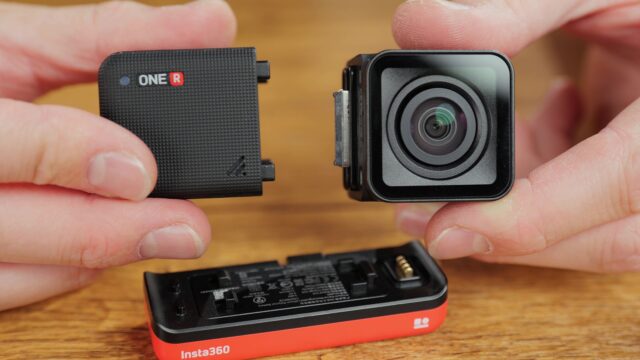
There is one more similarity with the Insta360 ONE R – the modular design. The camera module of the Insta360 ONE R, however, cannot function alone. You always need to build the camera together with all three modules. The modularity of Action 2 is a bit different as the camera can work as a standalone unit. The camera body has magnets with communication pins and special side locks that can snap an accessory module to the camera. I have to say the connection is pretty solid. Perhaps the most useful accessory is the front touchscreen module which adds lots of additional features – an additional battery for longer battery life, better microphones, a speaker to hear the audio for recorded clips playback, an additional button, the front-facing touchscreen, USB-C port, and a MicroSD card slot for up to 256GB memory cards. Speaking of storage options, without the module, the camera only has 32GB of internal storage. A big chunk of that storage is, however, reserved for the camera’s system. When I format the internal storage, it only shows 22.4GB of free space.
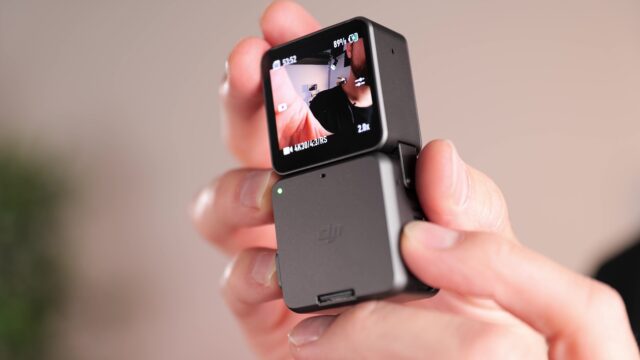
The camera I reviewed still had the pre-production firmware in it, so it was not possible to move the recorded files between the internal storage and the memory card. DJI told me, however, that they will make this possible with the final release version of the firmware. Because of that, when I tested the camera, the usability of the separated storage was a bit limited for me. When used with the camera, the battery of the front touchscreen module gets drained first. As soon as it is empty, you can’t use the module anymore so you also lose the microSD card as a storage option. One solution is to purchase an additional battery module that DJI also offers. It looks similar to the front touchscreen module, but it does not have a screen. It still includes the memory card slot though, so if you run out of battery in the front touchscreen module, you can switch the SD card into the battery module, snap it on the camera, and continue using it. What I noticed when using the camera, saving the files on the memory card took quite a long time. After I stopped the recording, it sometimes took 5 seconds or even more before the file got saved to an SD card and I could start recording again. I hope this will be improved with the final release of firmware.
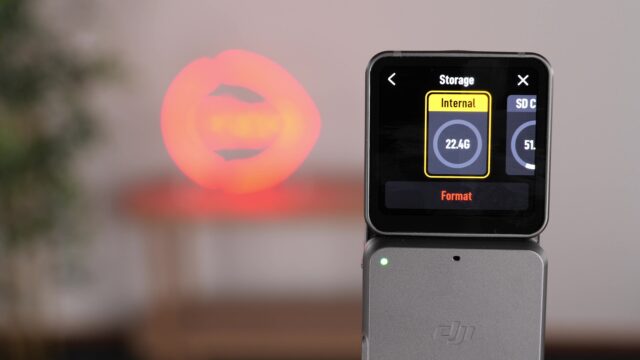
Video modes – 4K all the way
When it comes to available resolutions and framerates, my favorite recording mode is the 4K 4:3 mode which is available up to 60fps. It actually has a width of DCI 4K – 4096 x 3072 which is the full resolution of the 12MP sensor. Generally, I like 4:3 modes with action cameras because they produce the widest possible field of view and you don’t lose that much of the image when exporting different aspect ratios for social media. When it comes to slow motion, the camera can record up to 120fps in 16:9 UHD 4K, or up to 240fps in Full HD. From my testing, however, the 240fps Full HD mode does not look very good. There are visible artifacts and heavy sharpening visible in the image. For slow motion, I would definitely stick to the 4K 120p mode.
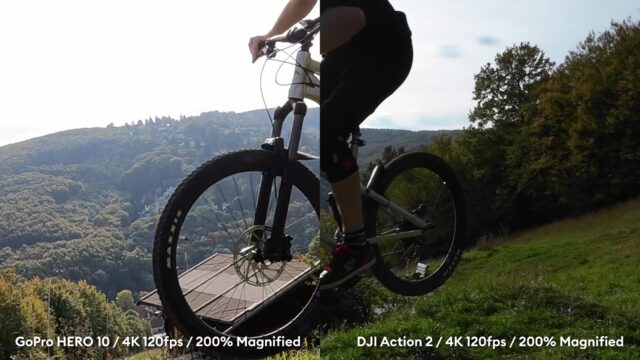
The recording modes are available in either H.265 or H.264 compression, but the best modes such as the 4K 4:3 are only available in H.265. The maximum bitrate is 130 Mbps which I think is plenty even for the highest quality in H.265. There are two picture profiles – Normal and D-Cinelike (which offers flat colors for further grading). I shot most of my clips in normal picture mode, but I found that some of them were a bit oversaturated, so for some scenarios, the D-Cinelike would have probably been better. As with all other action cameras, all the recording modes are in 8-bit only, so the color grading is a bit limited. The good thing is that there is a Pro mode in the camera that unlocks manual shutter speed and ISO settings.
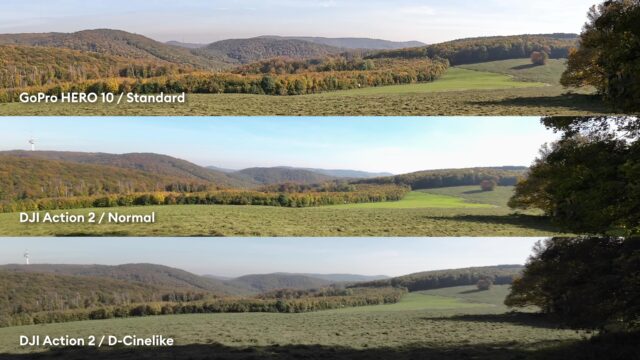
FOV options and electronic stabilization
The camera offers three Field of View settings – Ultrawide, Wide, and Standard Dewarp. I really liked the ultrawide as it includes more of the surroundings in the POV clips. In every mode, you can also record with a 2x or 4x digital zoom, but that, of course, degrades the image quality. Action 2 uses an electronic stabilization called RockSteady 2.0 which works in all the modes and in all fields of view, but it slightly crops into the image. There is also a new horizon-locking mode called HorizonSteady, but it only works in up to 2.7K 16:9 mode up to 60fps and only in the standard (dewarp) field of view, so the crop in this mode is quite significant. I think the RockSteady did a good job in most scenarios, but as soon as I shot a darker scene, there have been some weird artifacts from the stabilization. Again, I hope DJI will have this refined in the final release of firmware.
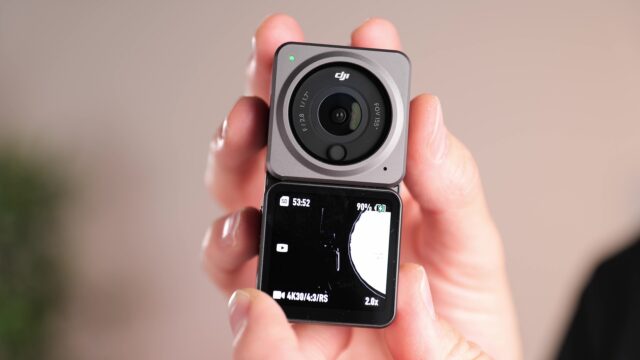
Timelapse
I tried a timelapse with the camera, but Action 2 struggled to expose correctly for quite some time because I started the timelapse in a dark garage. I hope this will also be fixed with the final firmware. With timelapse, the camera generates a video and you have the option to save the individual photos in either jpeg or DNG raw format. I tried to correct the exposure with the DNG files that I saved, but for some images, it was too far overexposed. You also have the option to expose manually for the timelapse. Action 2 can also use the RockSteady 2.0 stabilization to create a moving timelapse called hyperlapse.
Macro lens adapter
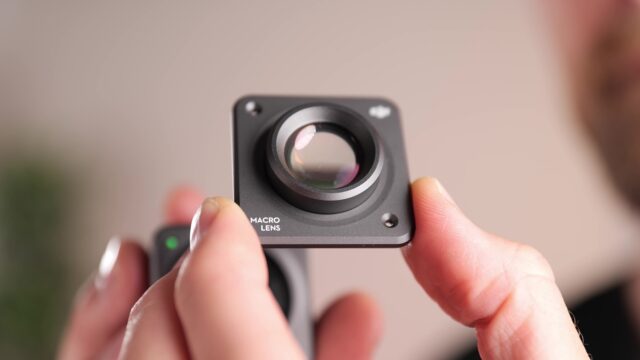
DJI also sent us this Macro Lens adapter for Action 2. It snaps on the camera with magnets and holds quite well. It can be used to film very close objects, but it introduces heavy vignetting with ultra-wide and wide modes. I used it only for a few clips in the Standard Dewarp field of view. As I wrote in the beginning, I wished DJI also supplied a magnetic lens cap for the camera to protect the front element when the camera is not in use. When it comes to ND filters, DJI told me they will not offer any, but there will be some ND filters available from a third-party manufacturer. I suppose these will also use magnets to snap on the lens just like the macro lens adapter.
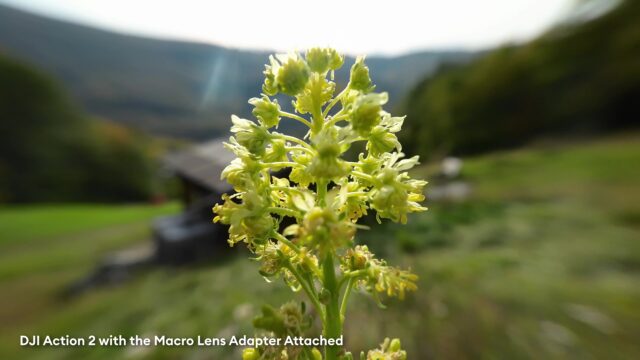
High temperature shutdown
Because the camera is so small and offers high resolution and high bitrate recording modes on a fairly large sensor, it generates a lot of heat. When it comes to a high-temperature shutdown feature, there are two options in the menu – high and standard. I tested how long the camera will record in 4K 4:3 60fps before it overheats and shuts down in an indoor room with a temperature of roughly 25-degrees Celsius.
With the setting on standard, the camera managed to run for 6:23, and with the setting on high, it shut down after 14:51. I have to say that after a few minutes, the camera body got very hot and after those 14 minutes of recording, it was extremely hot and almost impossible to touch. The body also gets pretty warm when you copy the files to the computer via the USB-C connector. If you use the camera outside during some activity, I am sure the maximum recording times will be longer. Lower framerates and resolutions will also prolong the maximum recording time.
In my second test, I recorded a half-hour outdoor bike ride with the 4K 4:3 30fps mode and the camera did not shut down at all and it wasn’t even very warm after that, so the surrounding temperature and wind make a huge difference. I think the aluminum body acts as an effective heatsink and that’s why the camera gets so warm. Don’t forget that the new GoPro HERO 10 also overheats in certain modes despite the larger body and smaller sensor.
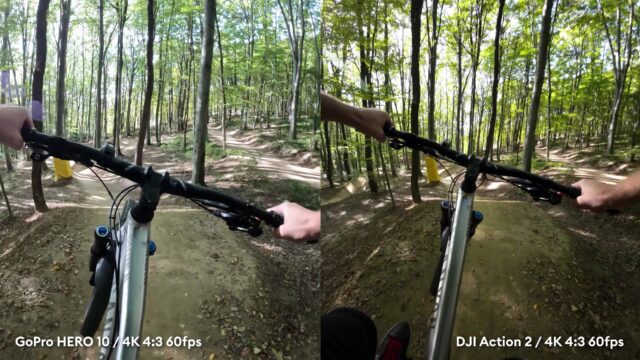
DJI Action 2 versus GoPro HERO 10
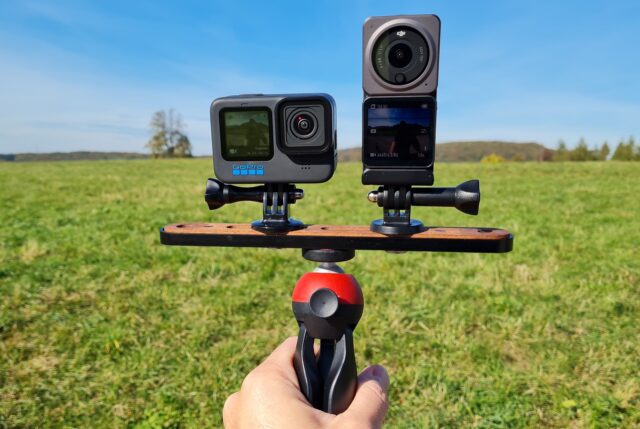
Speaking of the GoPro, I tested the DJI Action 2 head-to-head against the HERO 10 in a few clips. I would say the RockSteady 2.0 stabilization was more or less on par with GoPro’s latest Hypersmooth 4.0 which I only used in the standard mode. I did not use the boost mode as it crops in even more and that is not ideal for the first-person view. The Action 2 generally offers a wider field of view than the GoPro.
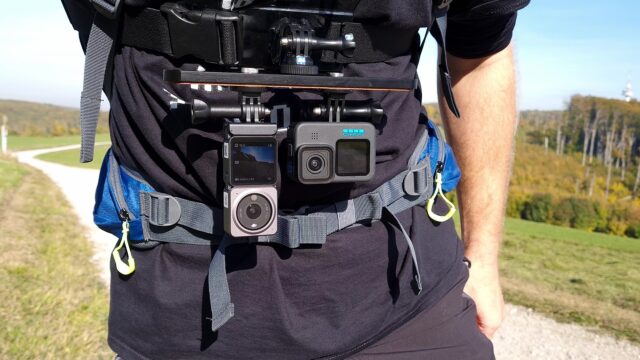
When it comes to the 4K 120fps modes, I have to say I prefer the image from Action 2 as it is somehow less oversharpened. When it comes to the 240fps mode, I did not like the image quality from any of the two cameras, but the GoPro was better because it offers a higher resolution of 2.7K in 240fps. The GoPro’s 5K 60p mode will give you slightly more detail and overall better image quality than the 4K mode in the Action 2 so for the ultimate image quality in up to 60 fps I think the GoPro wins, but not by much.
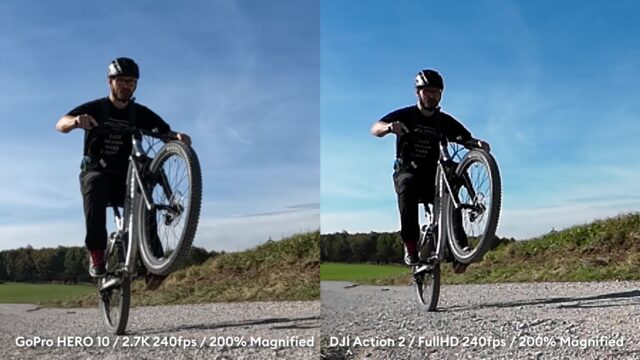
Color temperature sensor
Another interesting feature of the DJI Action 2 is the color temperature sensor underneath the lens which helps get the right temperature in the footage automatically. I have to say it worked quite well. When shooting upwards against the sun, the GoPro sometimes had a slightly magenta sky color, but the Action 2 managed to capture the blue sky quite accurately. The same happened in the forest, I usually preferred the colors coming out of the DJI Action 2.
DJI Action 2 on a regular drone
To take full advantage of the camera’s low weight, I also mounted the Action 2 on my DJI Mini 2 drone. It worked surprisingly well and resulted in almost an FPV-like footage when I flew the drone in Sport Mode. This way, I also equipped the Mini 2 drone with higher resolutions and framerates. The RockSteady 2.0 stabilized the footage quite well on the drone.
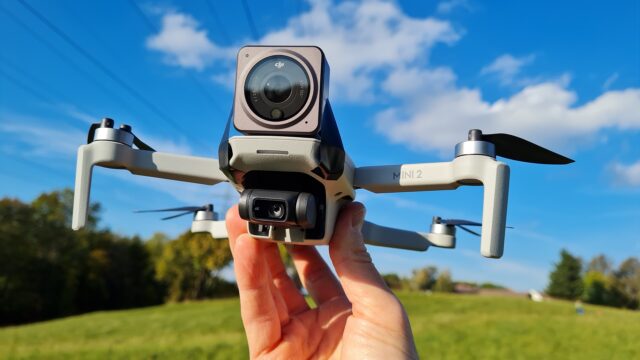
I decided to film the review in an NTSC mode even though I am located in Austria where we have the 50Hz PAL system. Firstly, I wanted to have higher framerates for the slow-motion footage in case I want to work on a 24p timeline, and secondly, I wanted to test the camera’s anti-flicker feature. This is available in 50, 60Hz, or automatic settings. Mostly, the automatic setting did a good job, but in some cases with 60fps footage, there was still some flickering. 30 fps footage was mostly fine.
Accessories ecosystem, Mimo App
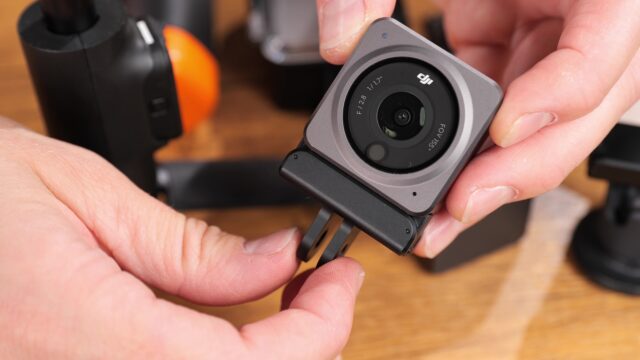
The good thing is that DJI ships the camera with a magnetic GoPro mount adapter, so you can use all the GoPro accessories. Furthermore, the camera comes with a ball head adapter that has a 1/4” thread at the bottom and can be paired with a reusable sticky mount. This is especially useful for mounting on smooth surfaces such as glass. It holds the camera quite well. Thanks to the magnet in the camera, you can also mount the bare body on any metal surface. Last but not least, DJI offers a new version of the DJI Mimo app which can control the camera, download the footage, and even make some automatic edits for social media.
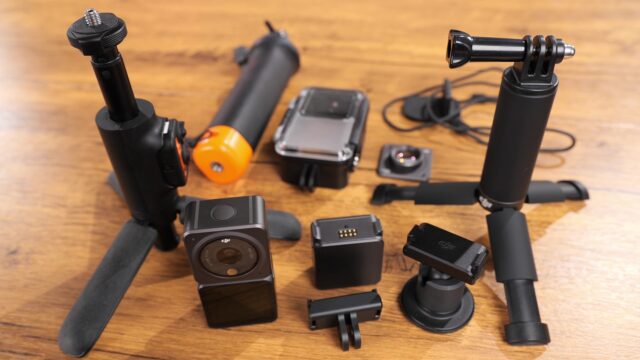
Summary
To summarize it, I think Action 2 is a really good action camera. If DJI is able to iron out all the minor bugs and missing features with the final release firmware, it will be a fantastic product. I especially like the small form factor, build quality, an ultrawide field of view, and the possibility to add the modules if needed. For such a small device I am surprised DJI used a larger image sensor than most action cameras. The included and optional accessories definitely provide enough mounting possibilities for the camera. If you are looking for the ultimate video resolution, the GoPro HERO 10 will serve you better, but the small DJI Action 2 really positively surprised me with image quality in all the 4K modes and especially in the 4K 120fps mode. The price is similar to the GoPro HERO 10. The DJI Action 2 actually starts at $399 which is currently $100 below the GoPro, but for the better combo with the front touchscreen unit, you will pay $20 more than what the GoPro costs. I think Action 2 offers a good value for money.
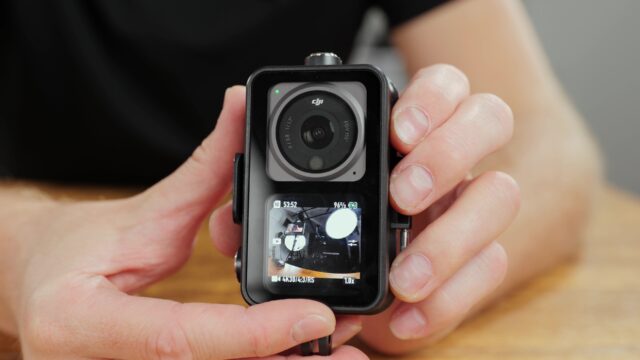
What do you think about the new DJI Action 2? Do you have experience with the previous Osmo Action or with the GoPro HERO 10? Let us know your thoughts in the comments section underneath the article.
